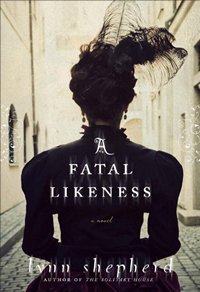From the desk of Br. Paul Byrd, OP “The Young Romantics have inspired hundreds of books, plays, and films over the last two centuries, and there have been many accounts of that famous summer they spent together on Lake Geneva in 1816, when Frankenstein was conceived. But all the same there remain many inexplicable gaps... Continue Reading →
New Books in the Queue for Summer 2013
Hello, readers. Summer is here — and it is time to head to the beach or take that well-earned holiday and read great books! Summer reads are always fun—and little light-hearted and playful—and the Austenesque & Regency faire in the queue is so exciting that the I am thrilled to share what we will be... Continue Reading →
In Celebration of Charles Dickens’ 200th Birthday: From Jane Austen to Charles Dickens: Guest blog by Lynn Shepherd, & a Giveaway
We are basically a tried and true Janeite, but quietly confess to admiration of another nineteenth-century novelist also born in Hampshire; - Charles Dickens. His style is entirely different than the witty underpinnings of our beloved Miss Austen, but one cannot ignore his fabulous characterizations and amazing plot twists. Today is the bicentenary of Dickens’... Continue Reading →
Follow Friday: The Jane Austen Twitter Project
Would you like to be part of a new Jane Austen story developing on Twitter? Join the Jane Austen Twitter project in progress. This has to be a first for Twitter! We’re planning a completely new experiment in creative collaboration, and would love you to get involved. The idea is to work together to write... Continue Reading →
Upcoming Reading & Writing Challenges, & Literary Blog Events in 2011
There are great reading and writing challenges, and literary events in the queue around the blogosphere that have come to my attention. So many in fact, that I decided to combine the announcements into one grand post, so here goes. Sense and Sensibility Bicentenary Celebration Maria Grazia at My Jane Austen Book Club is celebrating... Continue Reading →
Jane Austen and the ‘father of the novel’ – Samuel Richardson
Dear readers, last week I reviewed Lynn Shepherd's new Austen inspired mystery Murder at Mansfield Park. Not only is she an accomplished novelist, she is a distinguished Samuel Richardson scholar with a new book, Clarissa's Painter: Portraiture, Illustration, and Representation in the Novels of Samuel Richardson, published by the venerable Oxford University Press. Richardson was... Continue Reading →
Murder at Mansfield Park, by Lynn Shepherd – A Review
Mansfield Park is considered (by some) to be the dark horse of Jane Austen’s oeuvre and her heroine Fanny Price intolerable. Poor Fanny. She really gets the bum’s rush in Austenland. The patron saint of the weak, insipid and downtrodden, she is Jane Austen’s most misunderstood heroine. In fact, many dispute if she is the... Continue Reading →
Austen Book Sleuth: New Books in the Queue for July 2010
The Jane Austen book sleuth is happy to inform Janeites that many Austen inspired books are heading our way in July, so keep your eyes open for these new titles. Fiction (prequels, sequels, retellings, variations, or Regency inspired) Murder at Mansfield Park, by Lynn Shepherd Mansfield Park is considered (by some) to be the dark... Continue Reading →
Austen Tattler: News and Gossip on the Net: Issue No 9
“All that she wants is gossip, and she only likes me now because I supply it.” Marianne Dashwood, Sense and Sensibility, Chapter 31 April 12th - 18th, 2010 Hot News of the Week: New author Jenni James of Northanger Alibi, a modern retelling of Northanger Abbey influenced by Twilight, lands the Austenesque book publicity coup... Continue Reading →
Murder at Mansfield Park: Fanny Price Now an Outrageous Gold-digger in a new Austen Re-imaging
Jane Austen’s novel Mansfield Park will be next up for a literary mash-up. Bookseller.com reports that Beautiful Books, a London based publisher announced today that they have purchased Murder at Mansfield Park, a whodunit by Lynn Shepherd. Based on Jane Austen’s classic novel Mansfield Park, the murder mystery re-imagines Austen’s classic story re-casting gentle and... Continue Reading →








